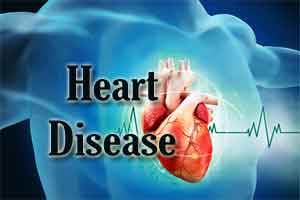- Home
- Editorial
- News
- Practice Guidelines
- Anesthesiology Guidelines
- Cancer Guidelines
- Cardiac Sciences Guidelines
- Critical Care Guidelines
- Dentistry Guidelines
- Dermatology Guidelines
- Diabetes and Endo Guidelines
- Diagnostics Guidelines
- ENT Guidelines
- Featured Practice Guidelines
- Gastroenterology Guidelines
- Geriatrics Guidelines
- Medicine Guidelines
- Nephrology Guidelines
- Neurosciences Guidelines
- Obs and Gynae Guidelines
- Ophthalmology Guidelines
- Orthopaedics Guidelines
- Paediatrics Guidelines
- Psychiatry Guidelines
- Pulmonology Guidelines
- Radiology Guidelines
- Surgery Guidelines
- Urology Guidelines
Low-Oxygen Environment May Reverse Heart Disease: Study

New York : Normal, healthy heart muscle is well-supplied with oxygen-rich blood, but a new study says that very low oxygen levels about the concentration at the top of Mt Everest may help reverse heart disease.
"This work shows that hypoxia (very low oxygen level) equivalent to the summit of Mt. Everest can actually reverse heart disease, and that is extraordinary," said Benjamin Levine, Professor of Internal Medicine at University of Texas Southwestern Medical Center in the US.
In this study, by placing mice in an extremely low-oxygen environment, the researchers said they were able to regenerate heart muscle.
"The adult human heart is not capable of any meaningful repair following a heart attack, which is why heart attacks have such a devastating impact," said Hesham Sadek, Associate Professor of Internal Medicine.
"Though counter-intuitive, we've shown that severely lowering oxygen exposure can sidestep damage to cells caused by oxygen and turn cell division back on, leading to heart regrowth," Mr Sadek noted.
The findings, published in the journal Nature, build upon years of work that began with the discovery that the hearts of newborn mammals have the ability to regenerate, similar to the way skin has the ability to repair itself after a cut.
But this ability of heart muscle to regenerate is quickly lost in the following weeks as the animal ages and the cells are bathed in the oxygen-rich environment of the beating heart, causing damage to the cells.
In the current study, the researchers lowered the oxygen in the air breathed by mice from the normal 21 percent to seven per cent about the concentration of oxygen at the top of Mt. Everest over a period of weeks, then monitored the mass and function of the heart.
After two weeks in the low-oxygen environment, the heart muscle cells called cardio-myocytes were dividing and growing.
Under normal circumstances these heart muscle cells do not divide in adult mammals.
The researchers had tried a 10 per cent oxygen environment, but there was no heart regrowth in the 10 per cent oxygen environment.
To avoid oxygen damage to cells, oxygen levels needed to be very low, a situation referred to as hypoxia.
"In theory, creating a low-oxygen environment could lead to repair not only of heart muscle, but of other organs as well," Mr Sadek noted.
"Although exposure to this level of hypoxia can result in complications, it is tolerated in humans when performed in a controlled setting," he pointed out.

Disclaimer: This site is primarily intended for healthcare professionals. Any content/information on this website does not replace the advice of medical and/or health professionals and should not be construed as medical/diagnostic advice/endorsement or prescription. Use of this site is subject to our terms of use, privacy policy, advertisement policy. © 2020 Minerva Medical Treatment Pvt Ltd